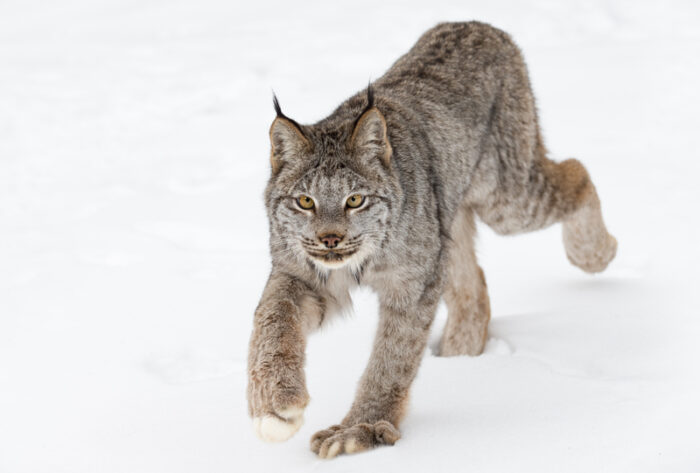Melanism is a really interesting natural condition that occurs in animals.
This is when the body produces more dark pigment, known as melanin. The result? A black animal!
(Albinism is when the opposite happens—an animal's body produces little to no melanin, resulting in white fur and hair, pale skin, and pinkish eyes.)
From squirrels and guinea pigs to snakes and birds, melanism leads to black versions of all sorts of animals. A famous species of this type of animal is the black panther, which a melanistic version of either a leopard or a jaguar. These big cats are relatively common. But what about other cat species?
Well, for the first time ever on camera, we have evidence of a black Canada lynx. This ultra-rare cat was seen by Thomas Jung of Whitehorse, Yukon. Fortunately for all of us, Jung is a wildlife biologist, so he was likely very aware just how special this sighting was.
You can see his short video (as well as the sounds of his dog barking in the background) below.
Rare or just rarely seen?
Black Canada lynx have been reported before, but never caught on film. Anytime we see something rare, it is natural for us to ask a question.
Is this rare? Or do we just rarely see it?
Melanism is an adaptation. For it to be passed on from generation to generation, the animal with that adaptation needs to be better at surviving than those without it.
As hunters, lynx rely on being able to remain well hidden from their primary prey, the snowshoe hare. Both in summer (in a forest) and in winter (against snow), the Canada lynx's grey, mottled coat does this quite well.
But being all black would not be much help to a lynx. This means that melanism is less likely to be passed on frequently (though these cats also prefer hunting at night, so perhaps being black could help after all?). Hopefully, this quick video is just the start of seeing more of these beautiful animals in the wild.
 A Canada lynx, sporting its normal grey mottled coat. (Photo 195852660 © Holly Kuchera | Dreamstime.com)
A Canada lynx, sporting its normal grey mottled coat. (Photo 195852660 © Holly Kuchera | Dreamstime.com)









